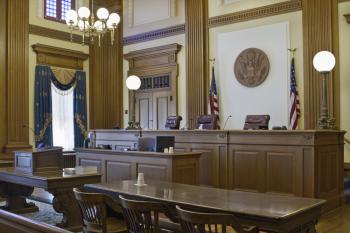Court Explained
What is a Court?
A court is a type of tribunal that is typically instituted and run by a governmental institution. A court, as a result of its government ruling, has the ability and authority to deliberate and subsequently settle legal disputes between parties who undergo civil or criminal trials.
In addition to evaluating disputes, while ultimately providing a resolution for the underlying problem, the court system in developed nations will carry out the administration of justice in all civil, criminal and administrative matters in accordance with the underlying nation’s rule of law.
In both civil and common law legal systems throughout the developed world, it is generally understood that everyday citizens may bring their claims or legal matters to a court for official review.
When these matters are brought to a court, the underlying matter is thoroughly reviewed under the rule of law to establish a settlement (typically the exchange of monies to the damaged party in a civil claim) or a remedy in the form of a criminal punishment.
Terminology Associated with the Court:
The court systems that interpret and apply the law are collectively known as the judiciary system. The tangible place where a court sits, meaning the actual venue that overhears a legal matter, is known as the venue.
The tangible room where the court proceedings occurs is called the courtroom and the building where the tangible courtroom is located is called the courthouse. All court facilities will range from a simple facility in rural communities to awe-encompassing structures in urban areas.
The term “jurisdiction” means to “speak the law”. The jurisdictional powers refer to the court’s ability to preside and deliberate over a person or a legal claim. In the United States of America, a court must possess both personal jurisdiction and subject matter jurisdiction.
Each State in America’s jurisdictional system establishes a court system for the territory under its particular control. This system, thus, allocates work to courts or authorized personnel through the ability to grant both civil and criminal jurisdiction. The grant of power to each category of specific court or individual may stem from a provision latent in a particular Constitutional Amendment or provision, or through the presence of a statute.
The trial court system is the court that holds trials. Trial courts, in most instances, possess original jurisdiction over the majority of cases. Trial courts, in developed nations of law which possess juries to institute a judgment on the particular matter, are referred to as the finders of fact. Trials that harbor judges will act as both finders of fact and finders of law. These court systems are known as bench trials.
Major Forms of Courts:
The two primary models for courts are the common law courts and the civil law courts. Civil courts are primarily based upon the judicial system present in France, whereas the common law courts are based on the judicial system in England. In the majority of civil law jurisdictions, courts will function under an inquisitorial system. In a common law system, the courts follow the adversarial system.
Procedural law governs the rules by which a court operates: civil procedure for the majority of disputes and criminal procedure for any violation of criminal law.
Related Topics
- Lying To An Investigator
- Circuit Court Explained
- Bona Fide Contracts
- The Facts About City Court
- Intervention
- Moratorium
- Easy to Understand Overview of the Circuit Court
- Judge Joe Brown
- Power of Attorney
- Arbitrary
